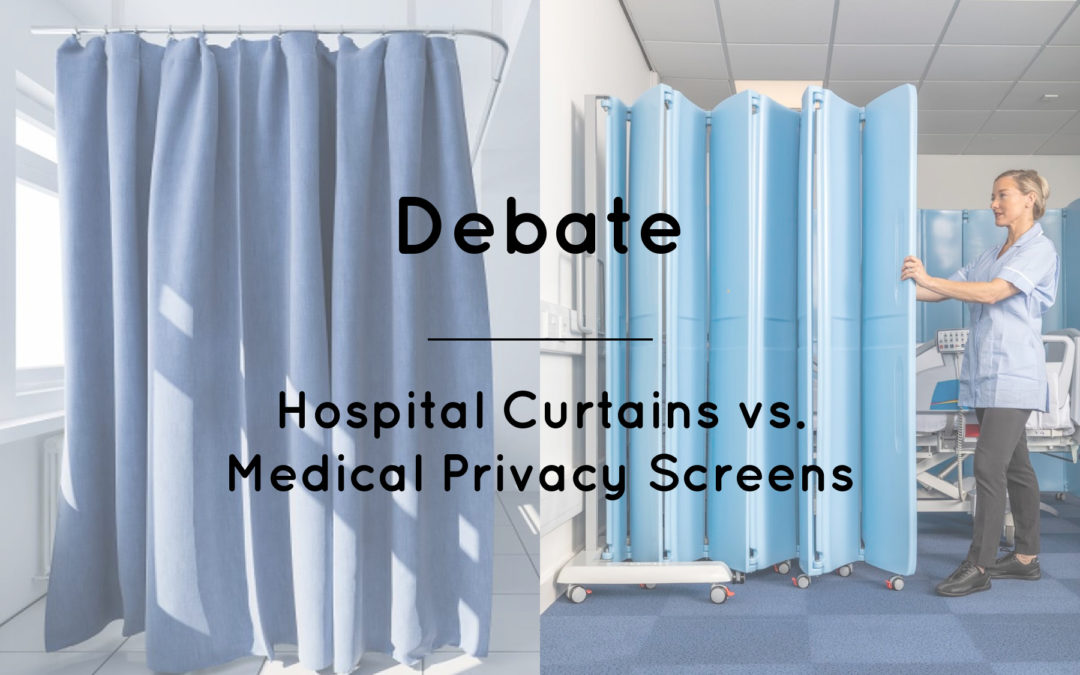There was a time when hospital wards were large, open spaces with no consideration for patient privacy, and then the idea of the cubicle curtain was born. Suspended from ceiling-mounted rails, hospital privacy curtains are now sometimes made of antimicrobial synthetic fabrics, but even so, they are increasingly drawing criticism for their potential to harbour and spread contamination.
Medical privacy screens are one alternative to hospital curtains and these would appear to be a more hygienic option, but there are other important factors, such as the initial investment cost, ongoing maintenance costs, space savings, aesthetics, health and safety, and mobile positioning flexibility, that you will want to take into consideration as well.
Over the coming weeks, we will be publishing a series of informative blogs that will compare hospital curtains with medical privacy screens. These will outline the benefits and drawbacks of both systems, to help infection control teams, estates managers and health trust directors make informed decisions that will shape the future of their wards, consulting rooms and other patient care areas.
We will be considering factors such as:
- The comparative initial and ongoing costs of both hospital curtains and medical privacy screens
- Which is most space-saving – a mobile privacy screen or a track-mounted hospital curtain?
- The infection control aspects of both traditional synthetic fibre hospital curtains and the newer anti-microbial privacy screen options
- Which is most versatile – a mobile hospital privacy screen or fixed hospital curtain
As the series progresses, we will include links to access all previous blogs in case you missed or would like to re-read them, so please keep watching this space to follow the debate on Hospital Curtains vs Medical Privacy Screens.

